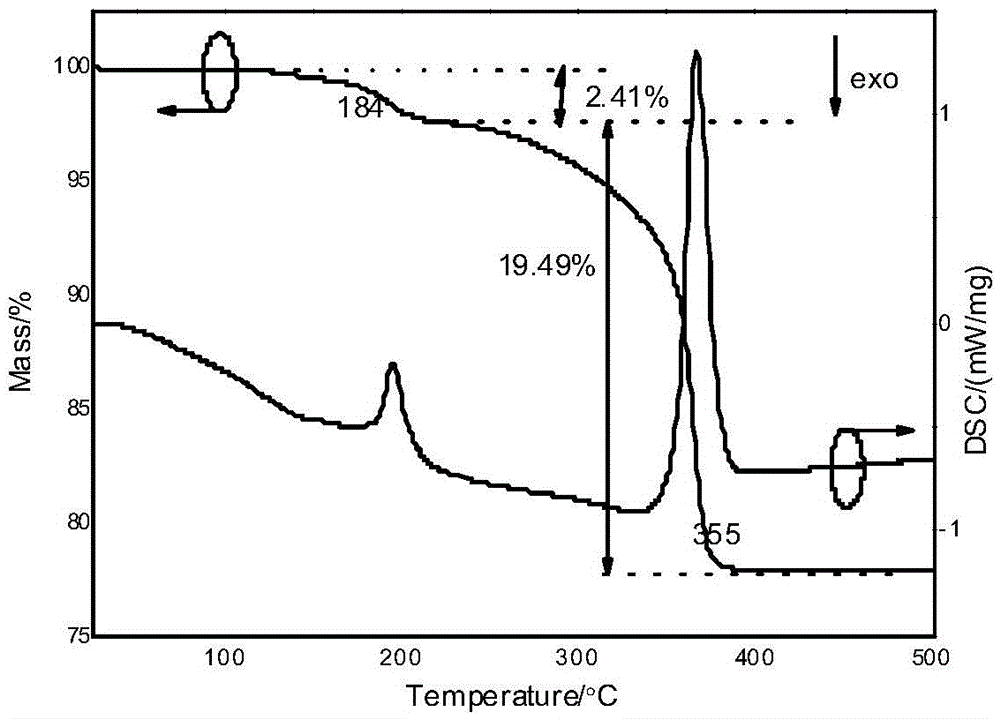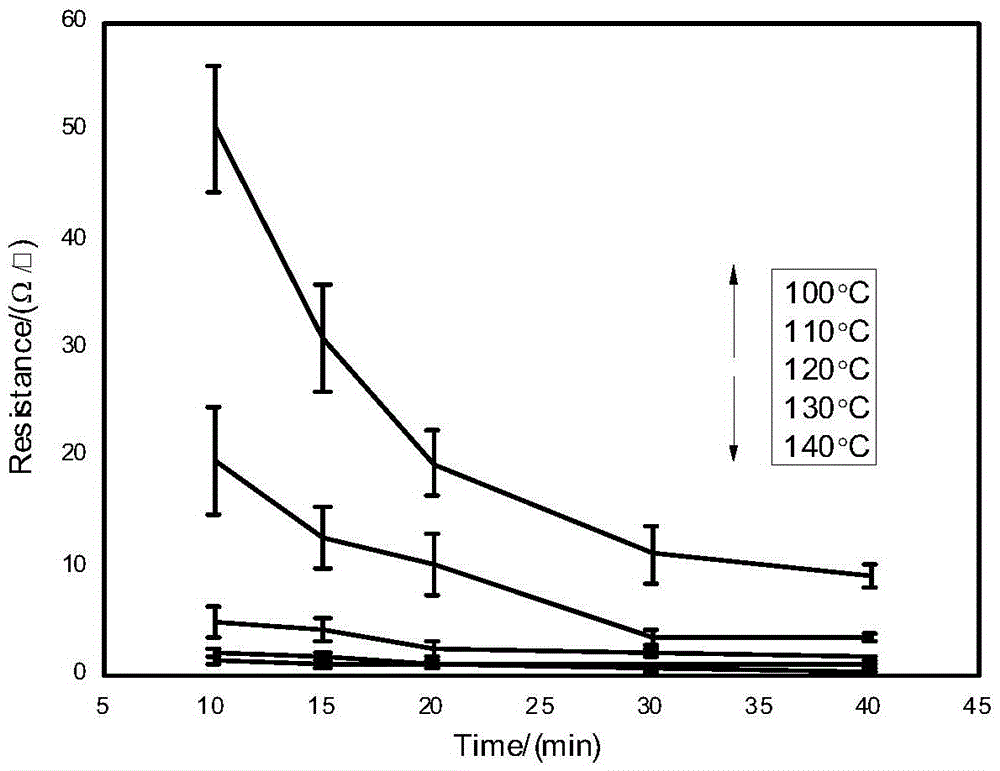Low-temperature-sintered organic metal conductive ink and preparing method thereof
An organic metal, conductive ink technology, used in inks, household appliances, applications, etc., can solve the problem of high price, and achieve the effects of good stability, good conductivity, and mild odor
- Summary
- Abstract
- Description
- Claims
- Application Information
AI Technical Summary
Problems solved by technology
Method used
Image
Examples
Embodiment 1
[0030] Mix 15ml of 2-amino-2-methyl-1-propanol and 22.5ml of methanol evenly, stir for 30 minutes, add 4g of silver carbonate, continue stirring until completely dissolved, and then filter through a 0.22um pinhole filter , to obtain orange-yellow conductive ink.
[0031] The thermal analysis curve of the obtained ink is as follows figure 1 As shown, it can be seen from the figure that the silver content is about 13%. The obtained ink was dropped on a glass slide, and after sintering at 90°C for 20 minutes, the surface morphology was as follows: figure 2 shown. The sheet resistance was 0.019Ω / □. The viscosity of the ink measured by a Brookfield LV-II rotational viscometer is 5.2 cP.
[0032] Put the prepared ink into the Epson R230 printer ink cartridge, print twice and then heat-treat at different temperatures and different times, the relationship between the sheet resistance and temperature and time is as follows image 3 shown.
Embodiment 2
[0034] Mix 15ml of 2-amino-2-methyl-1-propanol and 15ml of methanol evenly, stir for 30min, add 4g of silver carbonate, continue stirring until completely dissolved, then filter through a 0.22um pinhole filter membrane, An orange-yellow conductive ink is obtained.
[0035] Add a small amount of surfactant and viscosity modifier to the above ink. The viscosity of the ink measured by a Brookfield LV-II rotational viscometer is 8.3 cP. After heat treatment at 140℃ for 10min, the sheet resistance is 0.035Ω / □. Carry out XRD characterization to the obtained silver film, as Figure 4 shown.
Embodiment 3
[0037] Mix 12ml of 1-amino-2-propanol and 24ml of methanol evenly, stir for 30min, add 4g of silver carbonate, continue stirring until completely dissolved, then filter through a 0.22um pinhole filter to obtain orange-yellow conductive ink .
[0038] Add a small amount of surfactant and viscosity modifier to the above ink. The ink has a viscosity of 4 cP as measured by a Brookfield LV-II rotational viscometer. After heat treatment at 140℃ for 10min, the sheet resistance is 0.045Ω / □.
PUM
 Login to View More
Login to View More Abstract
Description
Claims
Application Information
 Login to View More
Login to View More - R&D
- Intellectual Property
- Life Sciences
- Materials
- Tech Scout
- Unparalleled Data Quality
- Higher Quality Content
- 60% Fewer Hallucinations
Browse by: Latest US Patents, China's latest patents, Technical Efficacy Thesaurus, Application Domain, Technology Topic, Popular Technical Reports.
© 2025 PatSnap. All rights reserved.Legal|Privacy policy|Modern Slavery Act Transparency Statement|Sitemap|About US| Contact US: help@patsnap.com



